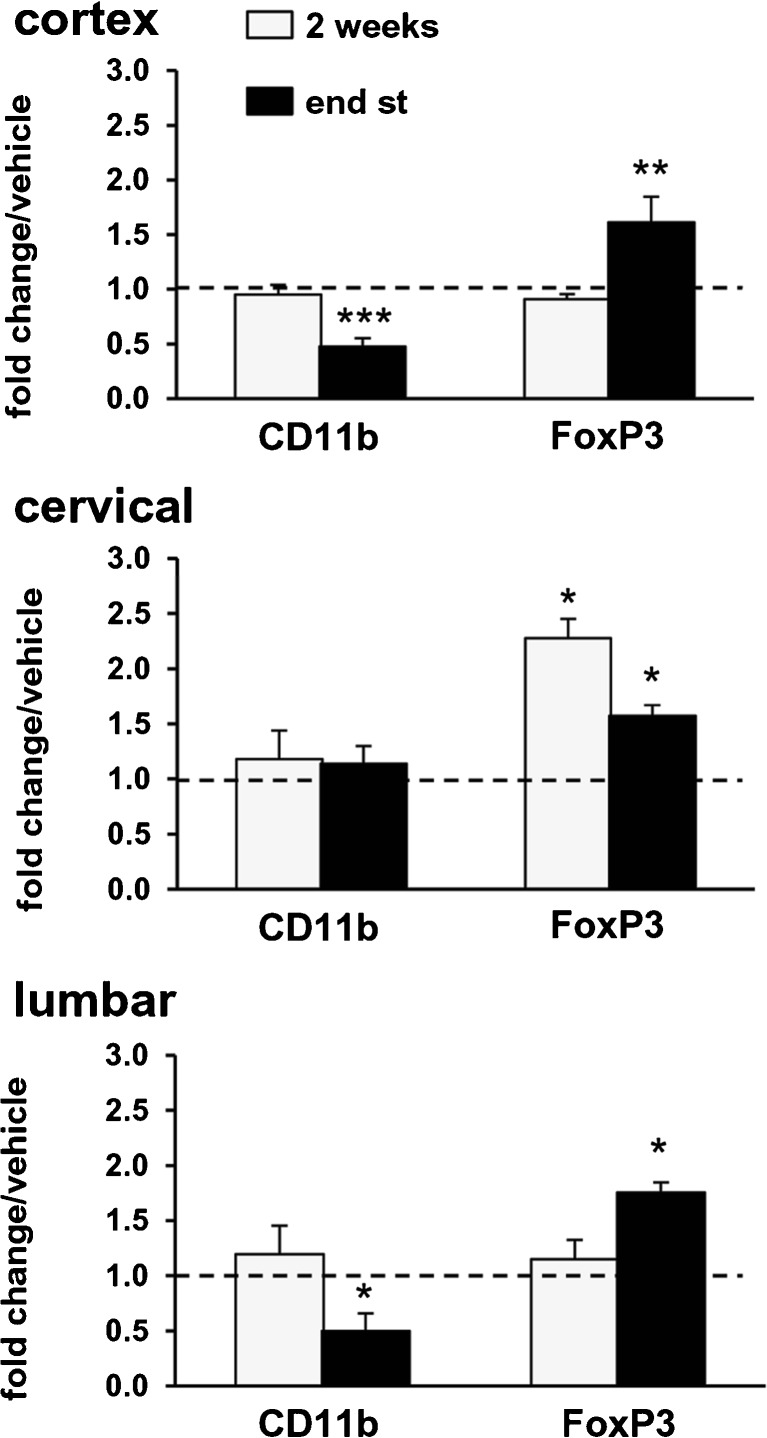Fig. 4.
Fingolimod modulates the expression of CD11b and FoxP3 transcripts in the spinal cord and cortex of mSOD1G93A mice. Real-time polymerase chain reactions were performed with mRNAs extracted from motor cortex, cervical and lumbar spinal cords of mSOD1G93A mice that were treated, starting from the onset of motor symptoms, with fingolimod (0.1 mg/kg) or vehicle for 2 weeks or until the end stage (end st) of the disease. Expression of each gene is presented as fold change over the expression measured in vehicle-treated animals, taken as 1 (indicated by a dotted line), for each brain region examined. After 2 weeks of treatment (light bars), CD11b mRNA was unaltered in all analyzed regions. At the end stage of the disease (dark bars), fingolimod induced a significant reduction of CD11b mRNA in lumbar spinal cord and motor cortex but not in cervical spinal cord. After 2 weeks of fingolimod administration, FoxP3 mRNA levels were significantly increased only in the cervical spinal cord (2.3 ± 0.2-fold increase vs vehicle-treated animals); after chronic administration of fingolimod (dark bars) FoxP3 mRNA levels were increased in all 3 regions. The relative expression level of each mRNA was calculated using the 2ΔCt method, normalized to hypoxanthine guanine phosphoribosyl transferase, as detailed in the “Materials and Methods” section. Data are mean ± SEM, n = 4–6; *p < 0.05, **p < 0.01; ***p <0.001

